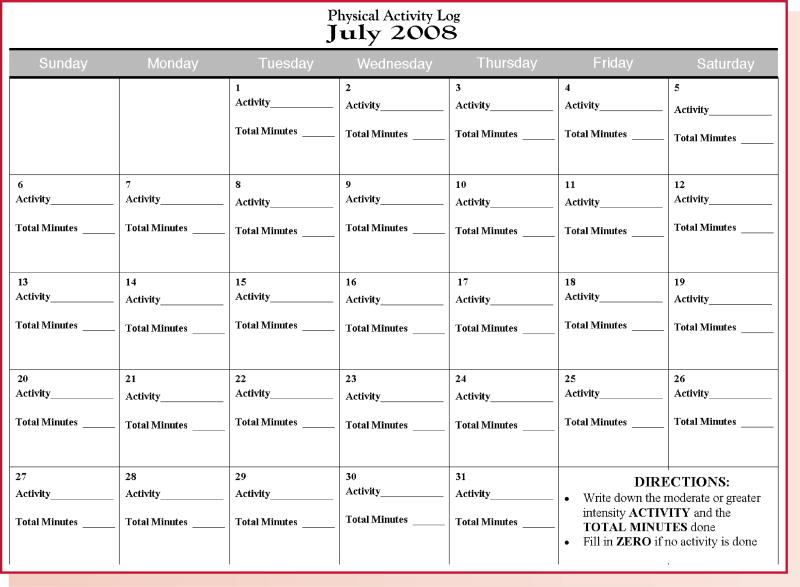WHAT IS SELF-EFFICACY?
The construct of self-efficacy was introduced in 1977 by Albert Bandura, Ph.D., a psychologist at Stanford University. Self-efficacy refers to confidence in one’s abilities to successfully perform a particular behavior. For example, if you are sure that you can walk 1 mile without any difficulty, then your self-efficacy for that particular behavior is high. On the other hand, if you are quite certain that you would become exhausted and need to stop after only a few feet, then your self-efficacy for walking the mile is low (Table 1).
TABLE 1.
Differences in Individuals With High and Low Self-efficacy Levels, According to Theory
| Individuals with high levels of self-efficacy tend to: |
|
|
| • view difficult tasks as challenges to master (rather than as threats to avoid) |
|
|
| • set challenging goals and stay committed to them |
|
|
| • persevere when difficulties arise |
|
|
| • bounce back quickly after setbacks |
|
|
| Whereas, individuals with low levels of self-efficacy tend to: |
|
|
| • doubt their ability |
|
|
| • shy away from challenges |
|
|
| • not set the bar as high when choosing goals |
|
|
| • show less commitment toward goals |
|
|
| • give up quickly when the going gets rough |
|
|
| • recover slowly from failure |
Thus, your level of self-efficacy can have a substantial impact on your behavior.
HOW DOES SELF-EFFICACY APPLY TO HEALTH AND PHYSICAL ACTIVITY?
Self-efficacy theory suggests that, if you believe that you can perform a behavior successfully, you will be more likely to engage in that behavior. For example, if you feel confident that you can ski down the mountain without falling, you might be more likely to go down the slope than the person who believes that such actions will result in bodily harm. This concept has important implications for health behavior change and has been applied to numerous health domains, such as nutrition, weight loss, alcohol use, smoking, sun protection, and physical activity. Research has shown that self-efficacy beliefs impact the adoption of new health behaviors, their generalization to varying circumstances, and maintenance over time. In the case of adoption, most people are hesitant to even try behaviors if they do not feel capable of performing well. For example, if a client has never played basketball before, he may have concerns about appearing unskilled in a pickup game and be disinclined to give it a shot, or a child may refuse to try tennis if she is worried about not being able to hit the ball over the net.
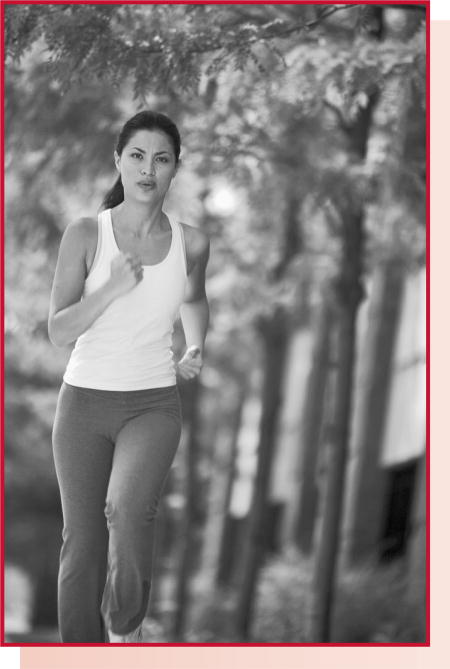
Self-efficacy also influences how health behaviors generalize to varying circumstances and can vary depending on the activity, situation, and even season. For example, a client may feel confident about his ability to engage in some forms of physical activity such as walking but not aerobics. Furthermore, the client may be confident about walking on a trail with a friend but not in other situations (e.g., alone on a treadmill). To further complicate the matter, the client may feel capable of walking regularly during the summer but have concerns about walking during the winter months because of inclement weather. Often, having self-efficacy in one area helps you have confidence in another. For example, if you have already become an accomplished ice skater, then you may feel more self-assured when learning to roller skate.
Self-efficacy beliefs play a role in maintenance of health behaviors over time. In fact, a recent study indicated that self-efficacy predicted the maintenance of physical activity among adults 5 years after completing a 6-month walking program (7). This is an important issue because of the many health benefits derived from maintaining an active lifestyle. Frequently, clients feel confident about starting a physical activity program but then express concerns about their ability to consistently choose to be active over the long term. Once the initial period of excitement fades, making physical activity a habit requires numerous strategies and persistence in the face of obstacles. For instance, a client may report being able to take brisk walks every day during her lunch break right now but feel uncertain about her ability to maintain an active lifestyle because of upcoming work deadlines and holidays. So you will probably want to help such clients anticipate future barriers to physical activity and then problem-solve them together (Table 2).
TABLE 2.
Four Main Sources of Influence on Self-efficacy
| • Past performance |
|
|
| • Vicarious experiences (observing others perform) |
|
|
| • Verbal persuasion |
|
|
| • Physiological cues |
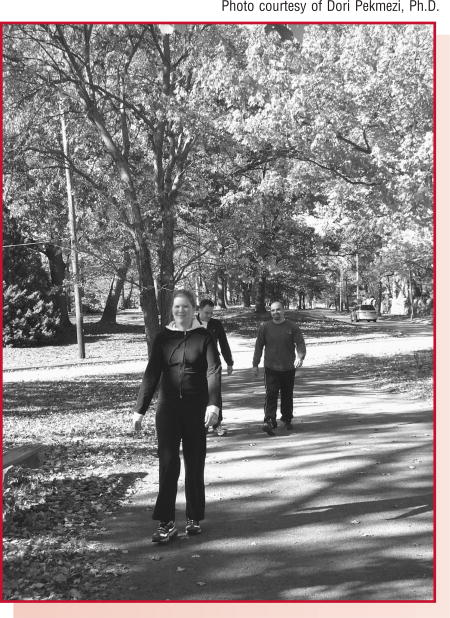
HOW DO WE DEVELOP SELF-EFFICACY?
Bandura’s self-efficacy theory suggests four main sources of influence in the development of self-efficacy: past performance, vicarious experiences (observing others perform), verbal persuasion, and physiological cues. Past performance is considered the most powerful method of developing self-efficacy. For example, a client who mastered performance on one machine such as the bicycle has self-efficacy related to that task. This efficacy based on past performance can be used to instill efficacy on other tasks such as on the elliptical machine. Success breeds success. On the other hand, past failure experiences can be discouraging and decrease efficacy levels. If a client became winded and had to turn around after a 3-mile walk last weekend, he might not feel very confident about completing the upcoming 10-km walk.
Vicarious experiences or observing others perform also is effective. If a client has seen someone else walk a mile, she may feel more confident in her own ability to walk a mile. Furthermore, theory suggests that this approach will be even more persuasive if the client considers the person observed as similar to herself. So if you are trying to increase an elderly individual’s self-efficacy for physical activity, a trip to an aerobic class for senior citizens might be more effective than attending a high school track meet.
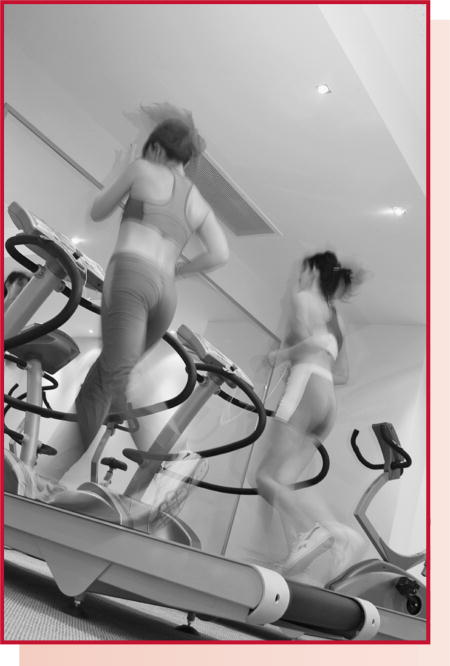
Social persuasion involves encouragement from others. Coaching and giving evaluative feedback on performance are common techniques. An example would include praising a client for taking four walks for the past week, giving him a few tips on how to work walking into his busy schedule and expressing confidence that he can reach his goal of walking five times per week next week. We all need to hear ‘‘you can do it’’ occasionally. Overall, social persuasion impacts the development of self-efficacy less than past performance or vicarious experiences and needs to be combined with actual successes. Obviously, the effectiveness of this technique depends on the credibility, trustworthiness, and expertise of the persuader.
Experiencing physiological cues such as anxiety and stress when thinking about exercising at a gym or participating in a team sport can negatively impact self-efficacy, but this is less influential than the other sources. Helping a client learn how to maintain an optimal level of physiological intensity for performing the task through relaxation techniques and self-talk can increase efficacy.
RATIONALE FOR MEASURING SELF-EFFICACY
Self-efficacy is the most frequently identified psychosocial determinant of physical activity. Therefore, it is important to evaluate and, if necessary, enhance your client’s self-efficacy for physical activity. People’s self-efficacy scores almost always increase as they become more active, so we encourage you to assess your client’s self-efficacy level periodically. The timing of evaluations will vary depending on the client and the setting. If a client’s self-efficacy has not increased to a satisfactory level, this is a red flag. You will need to discuss this matter because the client’s lack of confidence does not bode well for her becoming and staying active for life.
RECOMMENDATIONS FOR MEASURING SELF-EFFICACY
We recommend measuring self-efficacy for physical activity with the questionnaire developed by Marcus et al. (4). This brief five-item self-efficacy questionnaire measures the major components of self-efficacy and has been used in many physical activity studies (Tables 3 and 4).
TABLE 3. Self-efficacy Measure.
Physical activity or exercise includes activities such as walking briskly, jogging, bicycling, swimming, or any other activity in which the exertion is at least as intense as these activities.
| Circle the number that indicates how confident you are that you could be physically active in each of the following situations: | ||||||
|---|---|---|---|---|---|---|
| Scale | ||||||
|
| ||||||
| 1 = not at all confident | ||||||
|
| ||||||
| 2 = slightly confident | ||||||
|
| ||||||
| 3 = moderately confident | ||||||
|
| ||||||
| 4 = very confident | ||||||
|
| ||||||
| 5 = extremely confident | ||||||
|
| ||||||
| 1. When I am tired | 1 | 2 | 3 | 4 | 5 | |
|
| ||||||
| 2. When I am in a bad mood | 1 | 2 | 3 | 4 | 5 | |
|
| ||||||
| 3. When I feel I don’t have time | 1 | 2 | 3 | 4 | 5 | |
|
| ||||||
| 4. When I am on vacation | 1 | 2 | 3 | 4 | 5 | |
|
| ||||||
| 5. When it is raining or snowing | 1 | 2 | 3 | 4 | 5 | |
(Reprinted from: Research Quarterly for Exercise and Sport. 1992;63:60Y6. Copyright © 1992 American Alliance for Health, Physical Education, Recreation and Dance. Used with permission.)
TABLE 4.
Scoring the Self-efficacy Measure
| • Compute the average of all five items for each client. |
|
|
| • If any of the items are unanswered, have the client fill them in before scoring. |
|
|
| • A higher score on this measure indicates greater self-efficacy. |
STRATEGIES FOR INCREASING SELF-EFFICACY
Increasing self-efficacy levels can help people initiate and maintain a program of regular physical activity. For clients already high in efficacy, maintenance is all that is needed. Periodic assessments can help ensure that efficacy is not dropping. However, for clients who are low in efficacy, consider taking specific steps to help improve it. Although there are numerous techniques for promoting self-efficacy (Table 5), this section will focus on a few key strategies.
TABLE 5.
Strategies for Increasing Self-efficacy for Physical Activity
| Information Sources |
Strategies |
|---|---|
| Past performance | • Set goals and activity prescriptions with clients |
|
| |
| • Rehearse activity behaviors (e.g., guided walks) | |
|
| |
| • Self-monitoring with pedometers and/or activity logs | |
|
| |
| Vicarious experience | • Use videotapes of peer role models who are exercising |
|
| |
| • Have peer role models conduct group physical activity sessions | |
|
| |
| Verbal persuasion | • Emphasize physiological benefits of physical activity |
|
| |
| • Praise client for any progress | |
|
| |
| • Attribute all successes to the client’s own efforts | |
|
| |
| • Encourage family and friends to support and reinforce the activity behavior | |
|
| |
| Physiological cues | • Help clients anticipate and positively interpret physical discomforts related to physical activity (e.g., fatigue and muscle aches) |
|
| |
| • Relaxation training to decrease anxiety | |
Goal Setting
You will want to collaborate with your client on setting small attainable activity goals. You want to ensure success and build confidence, so focus on goals related to behaviors (i.e., moving more), as opposed to fitness goals, which may be hard for beginners to understand and accomplish, even with significant effort.
Setting the bar at a realistic level also is a good idea. In fact, for a real beginner, you might even want to consider the goal of just putting on the walking shoes and strolling out to the mailbox. Hopefully, setting attainable individualized goals and slowly but surely increasing the challenge will allow clients to take pride in their accomplishments and increase confidence for physical activity. Of course, the goals will need to gradually progress toward reaching the recommended levels of activity.
Self-monitoring
When setting activity goals, your clients will find it helpful to monitor their progress. This can be accomplished by using pedometers and/or activity logs. Monitoring is beneficial as it allows clients to gain a more accurate picture of their activity behavior. In addition, clients frequently report that monitoring makes them feel more accountable and serves as a reminder to be active. Over time, monitoring can allow clients to see how far they have come and pat themselves on the back. Also, when reviewing activity logs, you may note that the client who reported being completely sedentary 6 months ago is now attending three aerobics classes a week. This provides you with a wonderful opportunity to offer specific labeled praise regarding their progress.
Problem-Solving Barriers
Clients will frequently encounter barriers along the way to becoming more active. Reflecting on these barriers and helping the client problem solve can increase his confidence about being active in these difficult situations. The first step in this process is always identifying the obstacles. For example, your client may report that lack of time is the main barrier to his goal of becoming more active.
Next, you and the client brainstorm possible solutions. This would involve writing down as many creative ways to work physical activity into his daily schedule as possible. Brain-storming could generate solutions such as waking up half an hour early, taking the stairs instead of the elevator, going to the gym during lunch break, walking around the soccer field while waiting to pick up the kids from practice, and having a family dance contest after dinner.
After you have a long list of potential solutions, you and the client will want to discuss any consequences related to these solutions and weigh the risks and benefits. For instance, if your client wakes up half an hour early to walk, a possible consequence could be feeling tired at work in the afternoon. In this case, your client may decide that the risks of feeling a bit tired in the afternoon at work are outweighed by the benefits of regular physical activity.
Implementing Solutions
The next phase involves implementing the solution, monitoring its effects, and trouble shooting as necessary. At this point, your client actually tries waking up half an hour early to walk. If unpleasant effects such as fatigue are encountered, he can always try another solution from the list (e.g., going to the gym during lunch break). Addressing the client’s barriers to physical activity can be helpful in enhancing his confidence.
IS THERE EVIDENCE THAT EFFORTS TO CHANGE SELF-EFFICACY ACTUALLY WORK?
Recently, there has been a lot of research in the area of increasing self-efficacy for physical activity as this construct frequently influences (or mediates) changes in actual physical activity behavior. Promising results have been achieved through individually tailored programs delivered face-to-face by health care providers such as physicians and nurses (10) through mediated approaches (e.g., mail, telephone, and Internet). For example, attempts to improve self-efficacy using print materials, the telephone, and Internet have been successful among several community and worksite samples (5,9,11). The settings and samples in this area of research have varied widely from school-based interventions among adolescent girls (2) to home-based walking programs for older women with heart failure (3). Gains in self-efficacy for physical activity also have been achieved among people who are ill with conditions such as chronic obstructive pulmonary disease, osteoarthritis, obesity, diabetes, hypertension, and hypercholesterolemia.
One particularly interesting study tried to enhance self-efficacy among individuals with multiple sclerosis through lectures, discussions, and homework assignments (8). Topics included setting realistic, challenging, and attainable goals; problem-solving common barriers; monitoring performance feedback strategies to promote realistic outcome expectations; and developing social support networks. Results indicated that those who participated in self-efficacy training not only reported increased efficacy but also engaged in approximately 6 more days and 150 more total minutes of physical activity during the 3-month program than the control condition. In addition, these participants reported that they worked harder and that physical activity made them feel better than participants in the control group. Whereas these findings are exciting as regular physical activity can aid in the management of multiple sclerosis symptoms, there are other subgroups in need of such intervention.
Rates of sedentary behavior and related chronic illnesses are particularly high among underserved populations, such as low-income individuals and ethnic minority groups. As self-efficacy plays a more prominent role in the earlier stages of adoption, interventions geared toward increasing self-efficacy for physical activity may be particularly appropriate and relevant to these individuals. However, promotion of self-efficacy among underserved populations has remained largely unexplored. Although studies have called for research in this area and demonstrated a significant relationship between self-efficacy and activity levels among African Americans (1) and Latinos (6), there have been few efforts to increase self-efficacy for physical activity among these ethnic minority groups at risk for sedentary behavior.
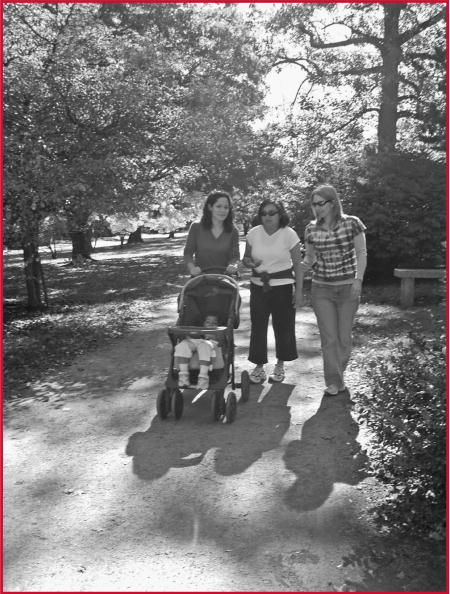
Example.
Physical Activity Logs are an easy way to self-monitor.
LEARING OBJECTIVES.
To better understand the construct of self-efficacy and its relationship with physical activity behavior.
To gain familiarity with methods of measuring and enhancing self-efficacy for physical activity.
CONDENSED VERSION AND BOTTOM LINE.
Self-efficacy plays a key role in the initiation, generalization, and maintenance of activity behavior. Thus, it is important to evaluate and, if necessary, enhance your client’s self-efficacy for physical activity. Strategies to enhance self-efficacy among clients include goal setting and self-monitoring, as well as helping clients overcome barriers.
Biographies

Dori Pekmezi, Ph.D., is a postdoctoral fellow at The Miriam Hospital and Brown Medical School where her research focuses on physical activity promotion among underserved populations.

Ernestine Jennings, Ph.D., is a postdoctoral fellow at The Miriam Hospital and Brown Medical School where her research focuses on smoking cessation and physical activity promotion.

Bess H. Marcus, Ph.D., is a professor in the Departments of Community Health and Psychiatry and Human Behavior at Brown University where she has spent the last 20 years conducting research on physical activity behavior.
Footnotes
Recommended Reading
Marcus BH, Forsyth LH. Motivating People to Be Physically Active. Champaign (IL): Human Kinetics; 2003.
References
- 1.Cromwell SL, Adams MM. Exercise, self-efficacy, and exercise behavior in hypertensive older African-Americans. J Natl Black Nurses Assoc. 2006;17(1):17–21. [PubMed] [Google Scholar]
- 2.Dishman RK, Motl RW, Saunders R, et al. Self-efficacy partially mediates the effect of a school-based physical-activity intervention among adolescent girls. Prev Med. 2004;38(5):628–36. doi: 10.1016/j.ypmed.2003.12.007. [DOI] [PubMed] [Google Scholar]
- 3.Gary R. Exercise self-efficacy in older women with diastolic heart failure: results of a walking program and education intervention. J Gerontol Nurs. 2006;32(7):31–9. doi: 10.3928/00989134-20060701-05. [DOI] [PubMed] [Google Scholar]
- 4.Marcus BH, Selby VC, Niaura RS, et al. Self-efficacy and the stages of exercise behavior change. Res Q Exerc Sport. 1992;63(1):60–6. doi: 10.1080/02701367.1992.10607557. [DOI] [PubMed] [Google Scholar]
- 5.Marcus BH, Napolitano MA, Lewis BA, et al. Telephone versus print delivery of an individualized motivationally tailored physical activity intervention: Project STRIDE. Health Psychol. 2007;26(4):401–9. doi: 10.1037/0278-6133.26.4.401. [DOI] [PubMed] [Google Scholar]
- 6.Marquez DX, McAuley E. Social cognitive correlates of leisure time physical activity among Latinos. J Behav Med. 2006;29(3):281–9. doi: 10.1007/s10865-006-9055-6. [DOI] [PubMed] [Google Scholar]
- 7.McAuley E, Morris KS, Motl RW, et al. Long-term follow-up of physical activity behavior in older adults. Health Psychol. 2007;26(3):375–80. doi: 10.1037/0278-6133.26.3.375. [DOI] [PubMed] [Google Scholar]
- 8.McAuley E, Motl RW, Morris KS, et al. Enhancing physical activity adherence and well-being in multiple sclerosis: a randomized controlled trial. Mult Scler. 2007;13:652–9. doi: 10.1177/1352458506072188. [DOI] [PubMed] [Google Scholar]
- 9.Plotnikoff RC, McCargar LJ, Wilcon PM, et al. Efficacy of an E-mail intervention for the promotion of physical activity and nutrition behavior in the workplace context. Am J Health Promot. 2005;19(6):422–9. doi: 10.4278/0890-1171-19.6.422. [DOI] [PubMed] [Google Scholar]
- 10.Van Sluijs EM, Van Poppel MN, Twisk JW, et al. The positive effect on determinants of physical activity of a tailored, general practice-based physical activity intervention. Health Educ Res. 2005;20(3):345–56. doi: 10.1093/her/cyg129. [DOI] [PubMed] [Google Scholar]
- 11.Whitehead D, Williams DM, Dunsiger S, et al. Differential impact of print and Internet based interventions upon physical activity process variables among African American vs. Caucasian participants. Presented at the 28th Annual Convention of the Society of Behavioral Medicine; 2007; Washington (DC). [Google Scholar]



